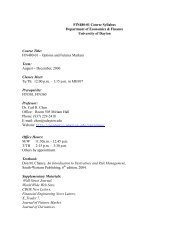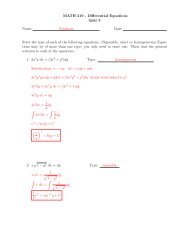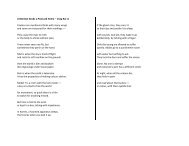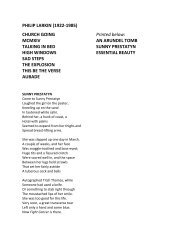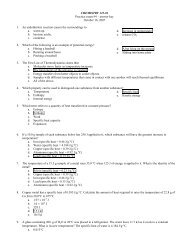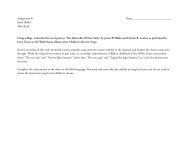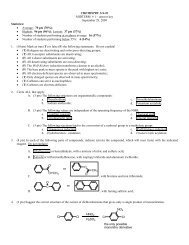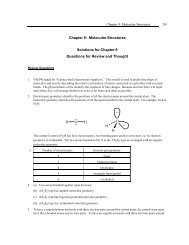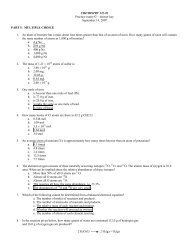Chap 26
Chap 26
Chap 26
Create successful ePaper yourself
Turn your PDF publications into a flip-book with our unique Google optimized e-Paper software.
MONEY, BANKS, AND THE FEDERAL RESERVE 221<br />
2. The required reserve ratio is the ratio of reserves to deposits that banks are required,<br />
by regulation, to hold. A bank’s required reserves are equal to its deposits multiplied by the<br />
required reserve ratio.<br />
3. Excess reserves equal actual reserves minus required reserves.<br />
B. Creating Deposits by Making Loans<br />
1. When a bank receives a deposit of currency, its reserves increase by the amount deposited,<br />
but its required reserves increase by only a fraction (determined by the required reserve<br />
ratio) of the amount deposited.<br />
2. The bank has excess reserves, which it loans. These loans can end up as deposits in another<br />
bank in the banking system. The new bank behaves the same as the previous bank (loaning<br />
the excess reserves) but has a smaller amount of excess reserves.<br />
3. The process continues until the banking system has created enough deposits to eliminate its<br />
excess reserves.<br />
3. Figure 10.2 illustrates this process when banks keep 25 percent of a deposit as reserves.<br />
IV. The Federal Reserve System<br />
A. The Federal Reserve System, or the Fed, is the central bank of the United States. A<br />
central bank is a bank’s bank and a public authority that regulates a nation’s depository<br />
institutions and controls the quantity of money.<br />
B. The Fed’s Goals and Targets<br />
1. The Fed conducts the nation’s monetary policy, which means that it adjusts the quantity<br />
of money in circulation.




